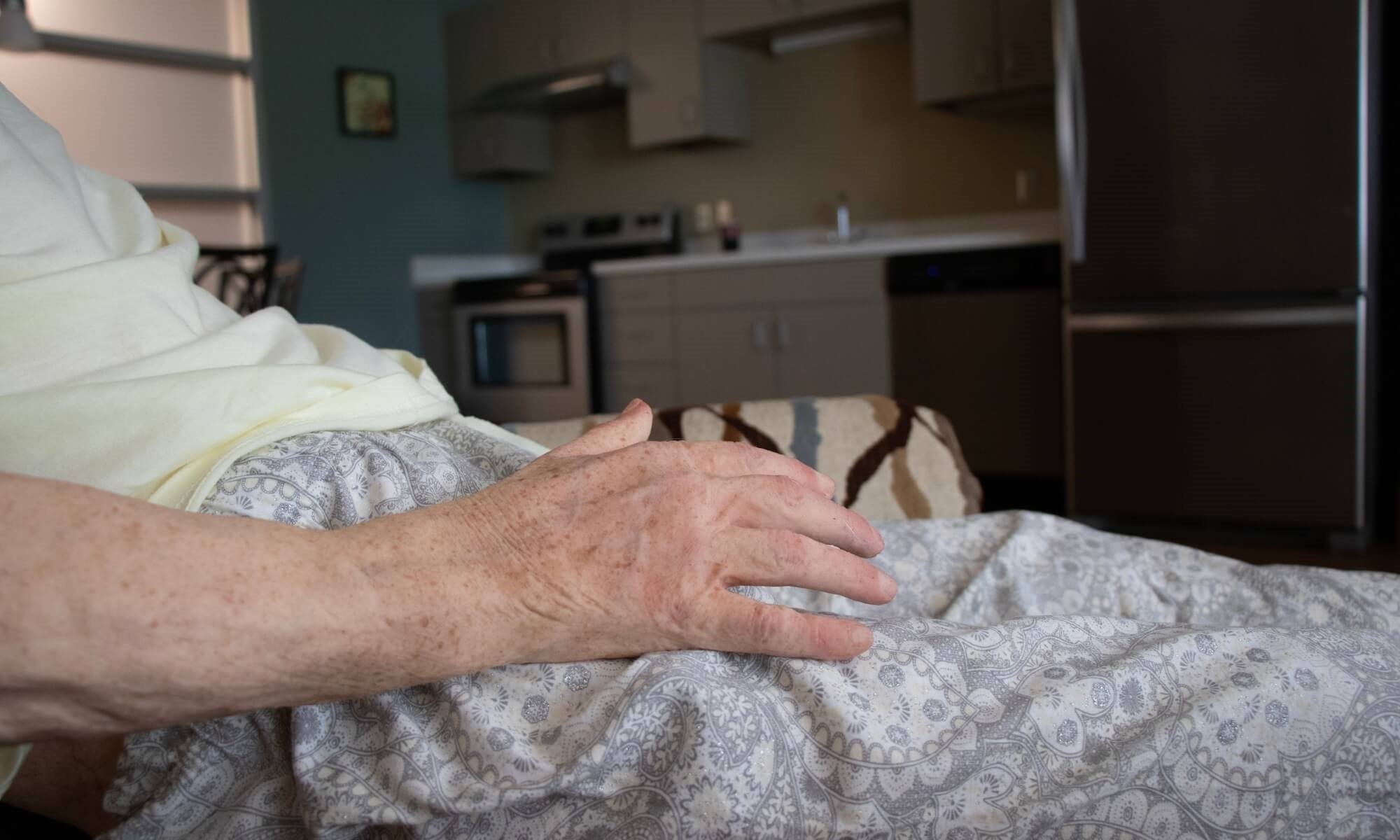 Seated in Concordia's simulation apartment within the school of nursing, the newest manikin could be mistaken as an actual human being.
Seated in Concordia's simulation apartment within the school of nursing, the newest manikin could be mistaken as an actual human being. Concordia University Ann Arbor's latest manikin is so lifelike it could easily be mistaken for the real thing. It's no wonder either because the "Lifecast Adult Female" was made using scans and 3D imaging of real people.
The manufacturer, Lifecast Body Simulation, bills their products as “the world’s most realistic teaching tool.” Concordia’s simulator features realistic fine details such as veins and underlying structures, for example. Its skin mimics the texture of actual human skin, and it weighs the amount of an average elderly woman to allow students to rehearse authentic bed transfers and fundamental skills.
Adding to its novelty, the manikin, which arrived this month on CUAA’s campus, is the first of its kind in the nation. It was created with the help of Oscar-winner John Schoonraad, a lifecast and special effects artist who has worked on cinematic giants including Saving Private Ryan, Indiana Jones, and The Last Jedi. As Schoonraad’s resume would indicate, Hollywood has been harnessing the strengths of lifecasting for decades in order to enhance multi-billion-dollar-grossing films. However, the nation is only on the cusp of leveraging this art form for a practical purpose within the medical field.
 “The fact that Concordia is on the forefront of the practice with this manikin acquisition speaks to the caliber of our program, faculty, and staff,” said Campus Dean of Nursing Cindy Fenske, DNP, RN, CNE. “We’re the best there is when it comes to simulation. The simulation team we have at Concordia is amazingly creative. They’re willing to try new things, and they put in the work to go to trainings and conferences to continually expose themselves to the latest and best ideas. Likewise, we strive to continually equip them with the best resources that are available to them, as demonstrated through our Lifecast.”
“The fact that Concordia is on the forefront of the practice with this manikin acquisition speaks to the caliber of our program, faculty, and staff,” said Campus Dean of Nursing Cindy Fenske, DNP, RN, CNE. “We’re the best there is when it comes to simulation. The simulation team we have at Concordia is amazingly creative. They’re willing to try new things, and they put in the work to go to trainings and conferences to continually expose themselves to the latest and best ideas. Likewise, we strive to continually equip them with the best resources that are available to them, as demonstrated through our Lifecast.”
Thanks to the expertise and ingenuity of Concordia’s chief simulation specialist, who requested that Lifecast manufacture CUAA’s manikin with lifelike bed sores on its skin, Concordia will also be able to simulate patient neglect scenarios. The truly one-of-a-kind manikin will allow the simulation team at CUAA to put the campus’ mock courtroom to use, as well, in rehearsing the legal ramifications of patient abuse.
The Lifecast simulator brings Concordia’s total manikin count to 13, and each one offers its own nuanced capabilities, including software that allows manikins to authentically cry, bleed, blink, and even give birth.
Simulators can range in price from $18,000 to $110,000 each. For that reason, Concordia has sought to purchase its manikins with the help of donors and grant funding. Oliver’s decades of experience in the sim field and his deep connections with manufacturers have also come in handy.
Related: Concordia health professionals lead sim training for U of M
“You see some schools where they’ve purchased the Cadillac of manikins just because they can, and they’re having students do the most basic assessments on it,” Oliver said. “You don’t need a $110,000 manikin to check a pulse. Instead, at Concordia, we’re really striving to match the fidelity of the manikins with their intended use. We want to be good stewards of the money we’ve been blessed to have.”
Support Concordia’s simulation experiences. Visit cuaa.edu/give.
Learn more about Concordia’s School of Nursing by clicking here.
— This story is written by Kali Thiel, director of university communications for Concordia University Ann Arbor and Wisconsin. She may be reached at kali.thiel@cuw.edu or 262-243-2149.
If this story has inspired you, why not explore how you can help further Concordia's mission through giving.